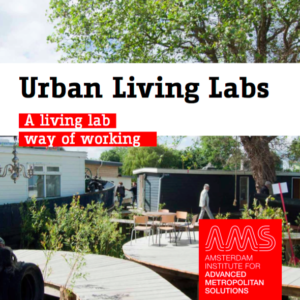Urban living labs have become a popular phenomenon. The Living Lab approach would provide real life research with its multiple stakeholders in a co-innovating inclusive setting, crucial in creating metropolitan solutions with impact, that will be adopted smoothly and swiftly by all involved, and thus help achieve prosperous living environments that are more liveable, sustainable, resilient and just. But what exactly are urban living labs?
Recently the Amsterdam Institute for Advanced Metropolitan Solutions published a research report on living labs. All over the world, the term ‘living lab’ is being used to refer to a variety of local experimental projects of a participatory nature. Practitioners and scholars agree on the need for a more precise definition as a starting point for living lab research, an important in-between-step between fundamental research and society wide implementation.
Kris Steen, Research Fellow at AMS Institute who conducted the research together with AMS Principal Investigator Professor Ellen van Bueren: “The aim of the research was to develop a methodology to facilitate systematic achievement of the living lab goals and ambitions in practice. How do urban living labs work? How can they contribute to a more sustainable environment? And how can you set up a successful urban living lab?”. Based on a literature review of living labs and urban living labs and a quick scan of 90 local innovation projects in the Amsterdam region, nine defining characteristics of urban living labs have been identified.
Read the full report here.

